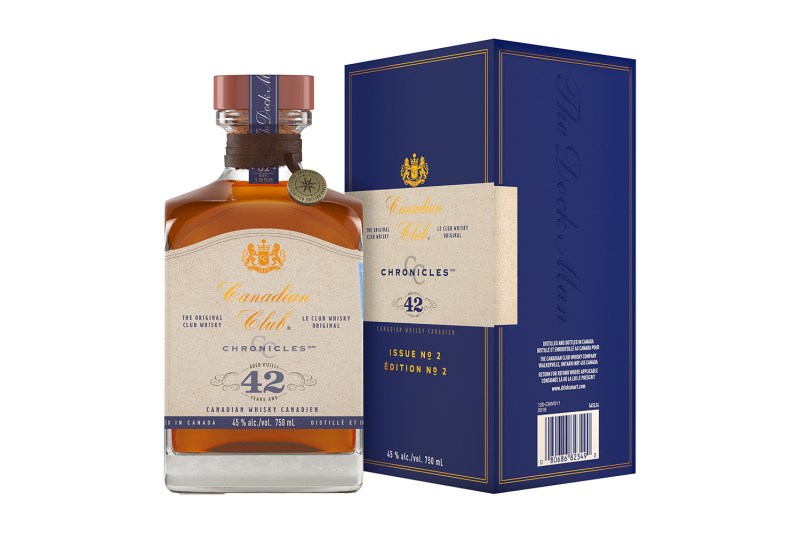The second release in Canadian Club’s CC Chronicles series is a 42-year-old Canadian whisky, also named Issue No. 2: The Dock Man. This slightly awkward name is meant as a tribute to the dock workers who helped the whisky keep flowing during the lean years of Prohibition. No. 2 is one year older than the last CC Chronicles release, 2018’s 41-year-old Water of Windsor. “For more than 150 years, we’ve consistently delivered quality expressions to whisky drinkers, and the release of Canadian Club 42 Year Old continues this tradition,” said global whisky ambassador Tish Harcus in a prepared statement. “Following the success of our first CC Chronicles release last year, we’re excited to unveil another premium, distinctive whisky that endures the test of time.”

When it comes to aging, Canadian whisky is more like Scotch than bourbon, in that it can spend decades inside a barrel and still taste pretty good. The cooler climate up north means that long maturation periods don’t completely destroy the flavor of the whisky with astringent tannin and oak notes, as it often does in Kentucky. With this whisky you’ll find rich brown sugar and molasses on the nose, and dried cherry, vanilla, and maple syrup on the palate. At 90 proof, there’s a little bit of welcome heat here as well. Ultimately, this does not drink like an over-aged four-decade-old whisky, and that’s a good thing. Representatives for the brand won’t give details regarding the mash bill, but they confirmed that the whisky was aged in American oak barrels (the exact type were not revealed) for the entirety of its maturation.
This is not the final release planned for the CC Chronicles range. There will be releases in coming years up to 45 years old, and following that will be a five-year skip to a 50-year-old whisky.
Canadian Club 42 will retail for an SRP of $300.



